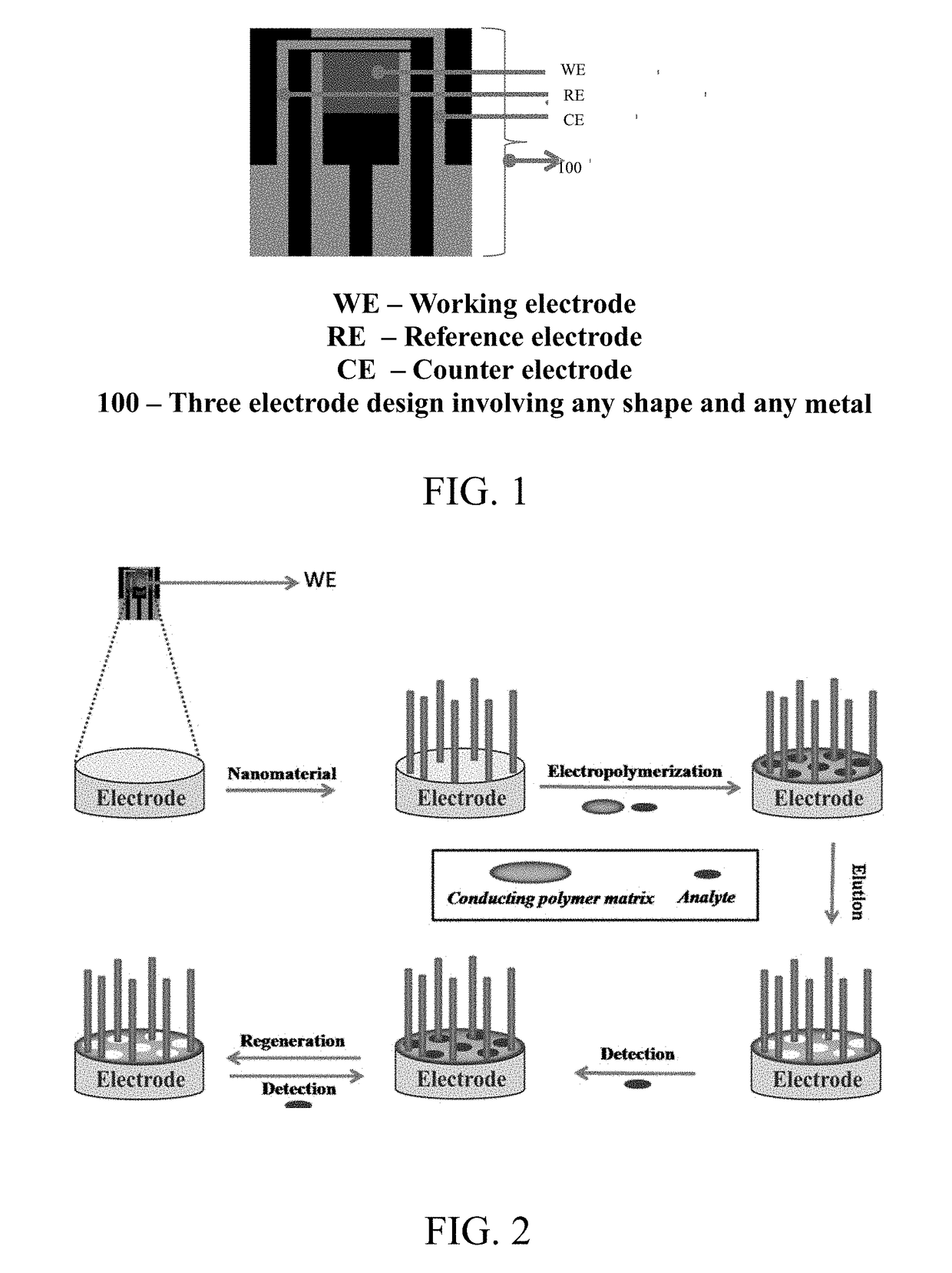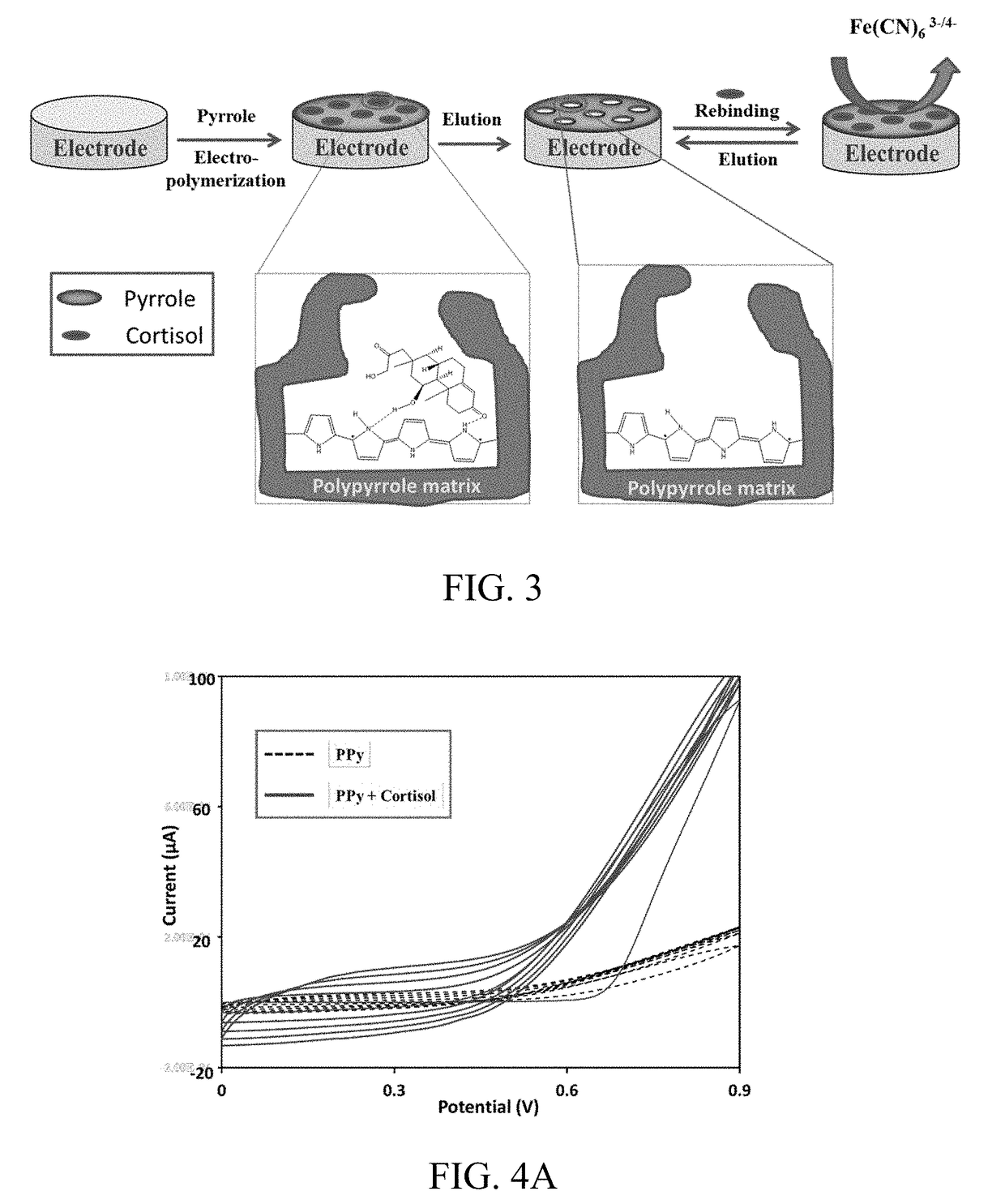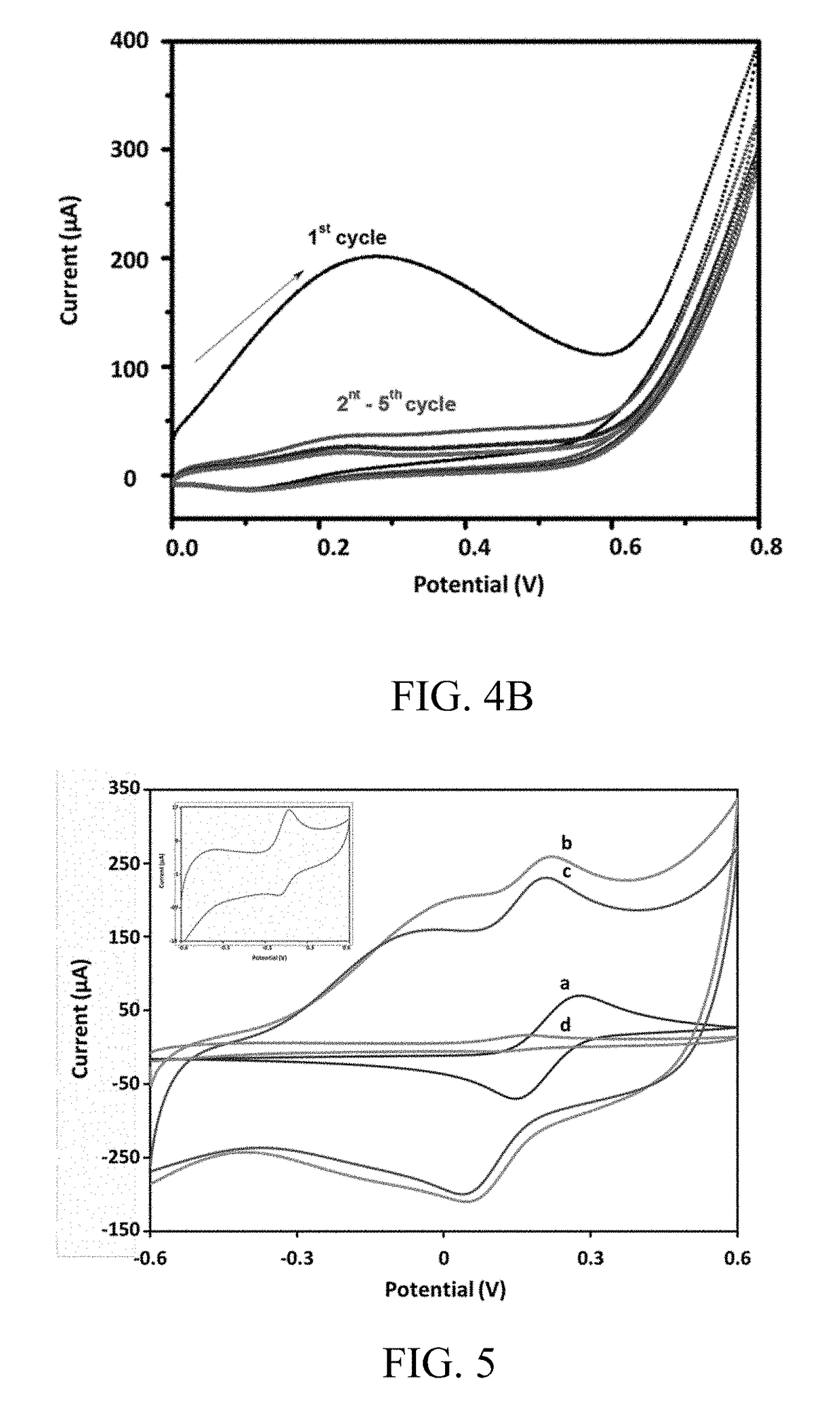Sensors for the detection of analytes
- Summary
- Abstract
- Description
- Claims
- Application Information
AI Technical Summary
Benefits of technology
Problems solved by technology
Method used
Image
Examples
example 1
emical Deposition
[0095]The electrochemical deposition of silver nanowires onto a working electrode was performed. Prior to the deposition, the electrode was cleaned and pretreated to remove any contaminants and to increase surface roughness. Then, the pretreated electrode was immersed in 0.1 M of KNO3 solution comprising 5.0 mM of AgNO3 and electrodeposited for different durations of time to obtain the silver nanowires modified electrode.
example 2
lymerization of MIP
[0096]Following the deposition of silver nanowires, the electropolymerization of MIP conducting film was performed using cyclic voltammetry. Cortisol-embedded polypyrrole atop the electrode was fabricated by sweeping the voltage range between 0 V and 0.9 V vs Ag / AgCl at a scan rate of 50 mV / s for 10 complete cycles in 0.1 M of phosphate buffer solution (PBS) comprising 0.4 M of pyrrole and 0.1 M of KCl. 0.1 M cortisol was added in the solution as the template molecule before electropolymerization.
example 3
emical Overoxidation of the Polymer Matrix
[0097]After the electropolymerization, the cortisol-embedded polypyrrole was overoxidized in 0.1 M PBS by scanning the potential from 0.6 to 1.6 V for 50 complete cycles to remove the imprinting cortisol molecules.
[0098]A control electrode modified with non-imprinted polymer (NIP) was obtained in the same way, but without cortisol being added as a template. Modified electrodes were dried under a nitrogen flow and stored at room temperature.
[0099]The stepwise fabrication of the biosensor is illustrated in FIG. 2. The sensor thus created comprised specific recognition cites for cortisol and can be used for detection of cortisol without using any redox mediator.
PUM
 Login to View More
Login to View More Abstract
Description
Claims
Application Information
 Login to View More
Login to View More - R&D
- Intellectual Property
- Life Sciences
- Materials
- Tech Scout
- Unparalleled Data Quality
- Higher Quality Content
- 60% Fewer Hallucinations
Browse by: Latest US Patents, China's latest patents, Technical Efficacy Thesaurus, Application Domain, Technology Topic, Popular Technical Reports.
© 2025 PatSnap. All rights reserved.Legal|Privacy policy|Modern Slavery Act Transparency Statement|Sitemap|About US| Contact US: help@patsnap.com



